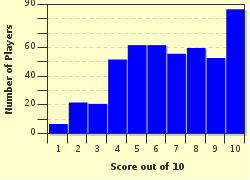Quiz Answer Key and Fun Facts
1. Since the October Revolution in 1917 Lenin had been supreme ruler of the USSR. He was wounded in two unsuccessful assassination attempts and also suffered a series of strokes. His health was failing, and when he died debate began as to who would replace him. In what year did Lenin die?
2. One of the strongest contenders for the leadership was Leon Trotsky, due to his high level of intelligence, his skills as a brilliant orator and the key role he had played in the Russian Civil War (1918-1921) as People's Commissar for War. However, many were scared of him. What was the *main* reason for this fear of Trotsky?
3. There was also competition from the right of the Bolshevik party in the shape of the young Bukharin. Bukharin's likable personality and popularity within the party led to him gaining which nickname?
4. Gregory Zinoviev was one of the "Old Bolsheviks" having been an active member since 1903 and having held many powerful positions. However, what action in 1917 meant that Zinoviev would have found it very difficult to become leader of the party?
5. A fourth person in the race for the role as leader of the party was another leftist Bolshevik. Which man, active since 1905 and often seen as "Zinoviev's political twin", was this fourth contender?
6. Perhaps the most fatal flaw on the part of all the leaders of the Bolshevik party was to underestimate Stalin. Which position, held by Stalin from 1922 till his death in 1953, allowed him to appoint many of his own supporters into high up positions while other leaders quarrelled?
7. Lenin did not want one man to become the Bolshevik leader and so criticised all potential successors (not just Stalin) in his final testament. Although sent to the Central Committee to be delivered upon Lenin's death, Stalin prevented its reading. Who, in alliance with Stalin, also prevented its reading to the Central Committee?
8. At the 13th Party Congress in 1924 Trotsky criticised the party policy put forward by Stalin, Kamenev and Zinoviev. In accordance with the 1921 ban on factions, what then happened to Trotsky?
9. Stalin's move to the right of the Bolshevik party came in 1925 after he gained support for his own theory of how socialism should progress. What name was given to this theory?
10. In order to take down his rivals on the right of the Bolshevik Party, Stalin now made his "left turn" and advocated rapid, brutal industrialisation. With the majority of his own supporters in seats of power he had little opposition. As well as the "left turn" what was this action also known as?
Source: Author
doublemm
This quiz was reviewed by FunTrivia editor
bloomsby before going online.
Any errors found in FunTrivia content are routinely corrected through our feedback system.

